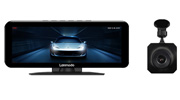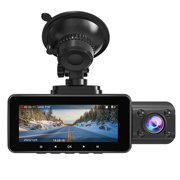Car has become an almost indispensable element in today's life, and with the constant upgrades in the field of technology, the automobile industry is coming up with new and modified versions, so as to enhance your driving experience! The car technology is witnessing leaps and bounds, with cars available on the roads that can handle emergencies and provide better protection. Of course, there is a lot of research, testing and failures that could finally lead us to this success, and here are a few of them worth listing.
1. Heat/AC systems
Whether it's hot and scorching summer or cold and chilling weather, driving for long hours would surely be a hassle particularly when your car doesn't have a proper system to adjust the temperature. An invention of heat / AC system has thus, made temperature adaptability easier than ever. You can now increase or decrease the temperature as per the weather so that you do not have to tolerate the troublesome temperature and make driving comfortable.
2. In-car radio
At times, we may get a little bored of driving.Before the invention of in-car radio, drivers can only stare ahead. An in-car radio will help you stay focused on the front view, meanwhile adding pleasure to your driving activity. This system will allow you to listen to your favorite tunes while driving. At the same time, it allows you to stay updated with the recent news or road conditions around you. Just make sure that the sound quality is good enough!
3. Car night vision
When driving on rural roads where there are no street lights, the car headlights aren't just enough to offer visual clarity in the darkness. In this context, night vision system is necessary to increase the driver's perception, thereby assuring an improved visibility, particularly when the weather is bad. Normally a car night vision system takes advantage of just faint light or heat emitted by human or animal, so as to give drivers a clear view of the road ahead, thereby helping them to take precaution measures in advance.

4. Built-in navigation
In-car navigation has come a long way now! The first GPS units showed up during the 1990s and then, it was really very slow and inaccurate! People used to have annoying experiences with this system, because they have to zoom in and zoom out. However, things aren't the same anymore! Modern navigation technology doesn't insist the driver to know the routes any longer. They can now search for local points of interest, automatically detour in case of an accident and download traffic data at ease. Driving would not appear to be a hassle to you anymore, instead exploring will be even more interesting to you in the days to come!
5. Parking sensor
Parking sensor, also known as proximity sensor, is basically incorporated into the vehicles to alert the driver regarding the obstacles that may cause hindrance while parking your car. The system uses ultrasonic proximity sensors to measure its distance to that of the nearby objects via sensors. Just as the driver uses the reverse gear, the parking sensors are triggered and an alert message is sent to the receiver so that he/she becomes even more careful and doesn't hit any pillar or vehicle unknowingly.
6. Automatic emergency braking
Auto emergency braking, commonly abbreviated as AEB, is a latest car safety feature that is meant to alert the driver to an imminent crash. It allows the driver to use the maximum braking capacity. In certain situations when the driver's response seems to be insufficient to avoid the crash, this AEB system will automatically apply the brakes to reduce the severity of the crash. It will either slow down the speed of the vehicle and then apply the brake for a complete stop.

7. Self-driving
With the growing popularity of the AI, one of the major innovations in the automotive industry is self-driving. This ensures the potential of the car to detect and analyze the surroundings all by itself without the intervention of human. The mechanism utilizes the inertial navigation system and the positional information from the GPS to locate itself and refine the position estimate. It basically uses the cloud computing to detect the traffic data, weather conditions and the map to decide its path and continue the drive. It also detects the adjacent vehicles along with the surface conditions to avail smooth driving without any hassle.



